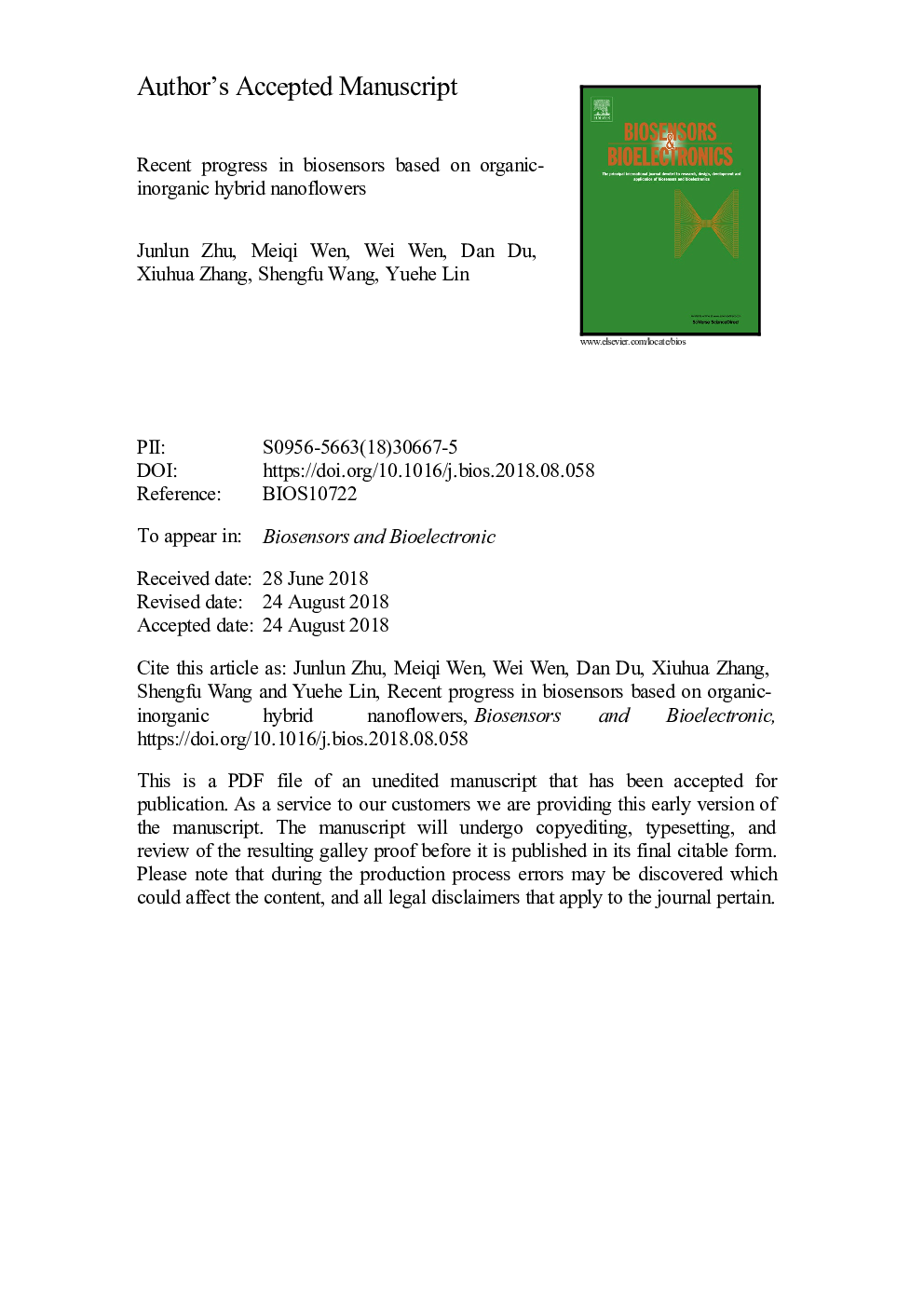| Article ID | Journal | Published Year | Pages | File Type |
|---|---|---|---|---|
| 10134191 | Biosensors and Bioelectronics | 2018 | 61 Pages |
Abstract
Organic-inorganic hybrid nanoflowers (HNFs) are a class of flower-like hybrid materials self-assembled from metal ions and organic components, such as enzymes, antibodies, DNA and amino acids et al. Based on their properties of enhanced enzyme activity, stability, facile synthesis and excellent biocompatibility, HNFs enable them to be a highly versatile platform for latent applications in many realms, such as biological sensing, biomimetic catalyst, dye decolorization and support nanomaterials, etc. Compared with free enzymes, HNFs are potentially advantageous for biological applications owing to their enhanced catalytic ability and powerful load capacity. Herein, an overview of recent developments achieved in HNFs biosensing, including electrochemical biosensors, colorimetric biosensors, and point-of-care diagnostic devices, is provided. We summarized the preparation of different HNFs based on the type of metal ions and biomolecules used. The signal tags involved in the all-in-one hybrid nanoflowers are particularly emphasized. The challenges, future trends, and prospects associated with HNFs and their related materials for biosensing are also discussed.
Related Topics
Physical Sciences and Engineering
Chemistry
Analytical Chemistry
Authors
Junlun Zhu, Meiqi Wen, Wei Wen, Dan Du, Xiuhua Zhang, Shengfu Wang, Yuehe Lin,
